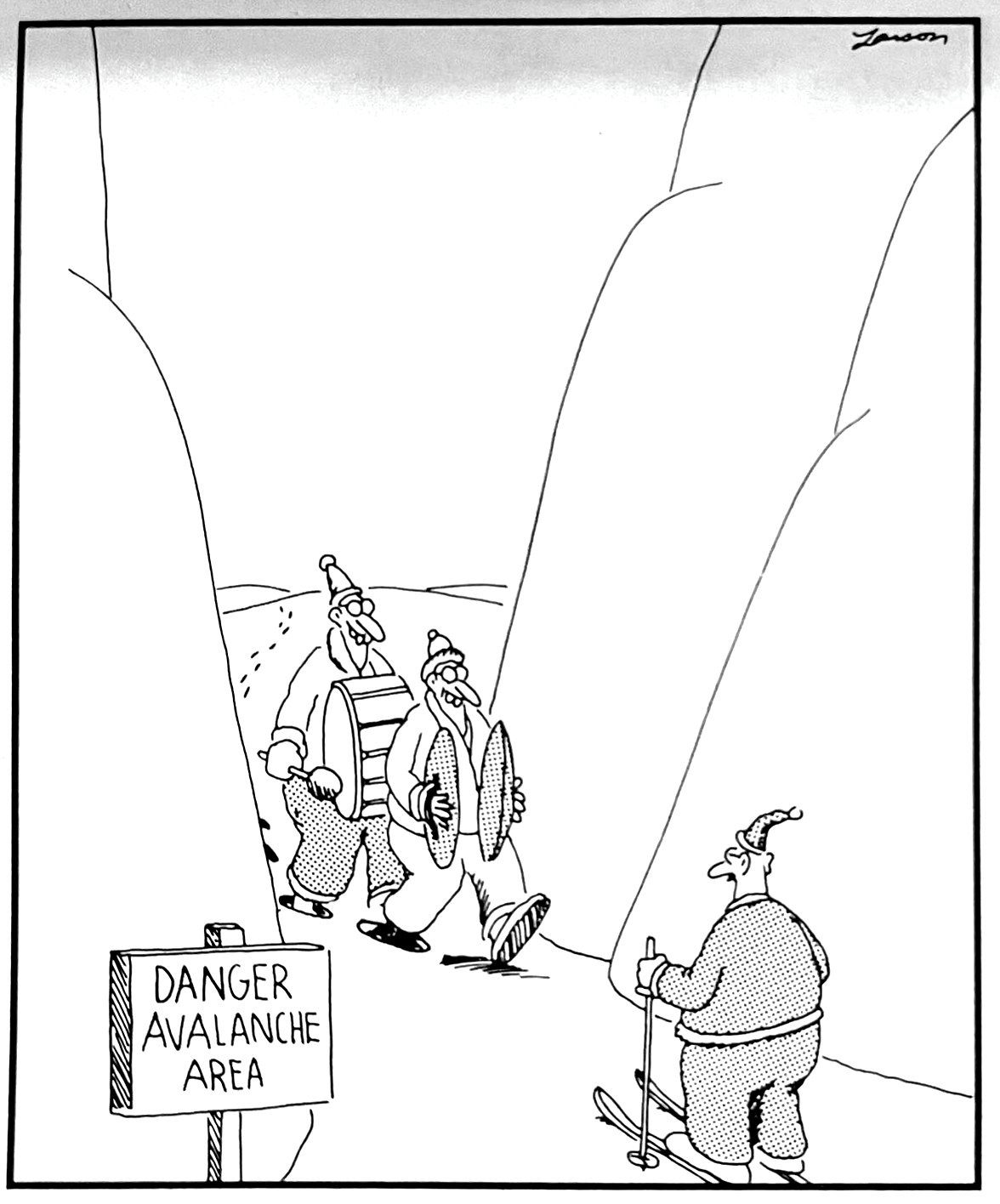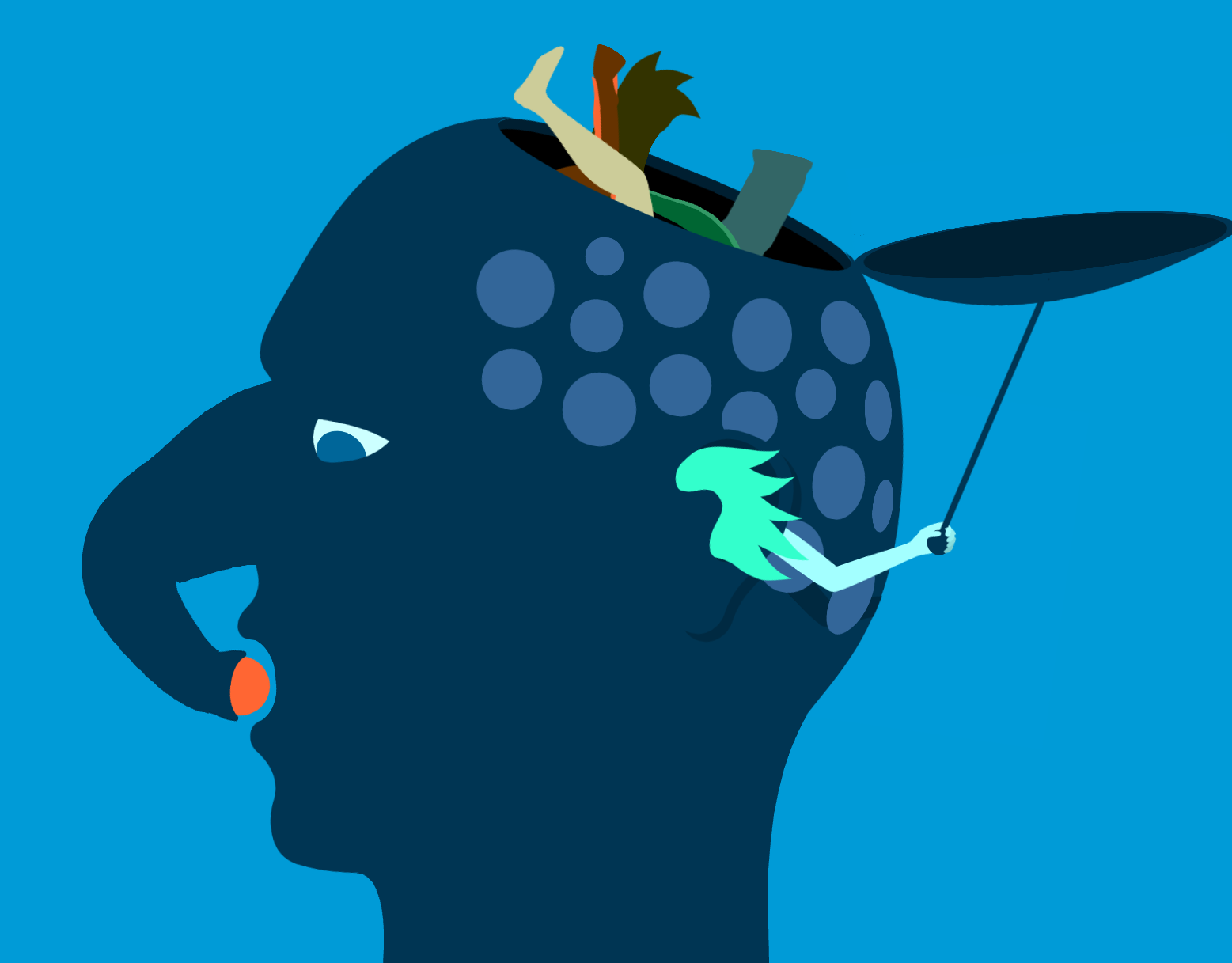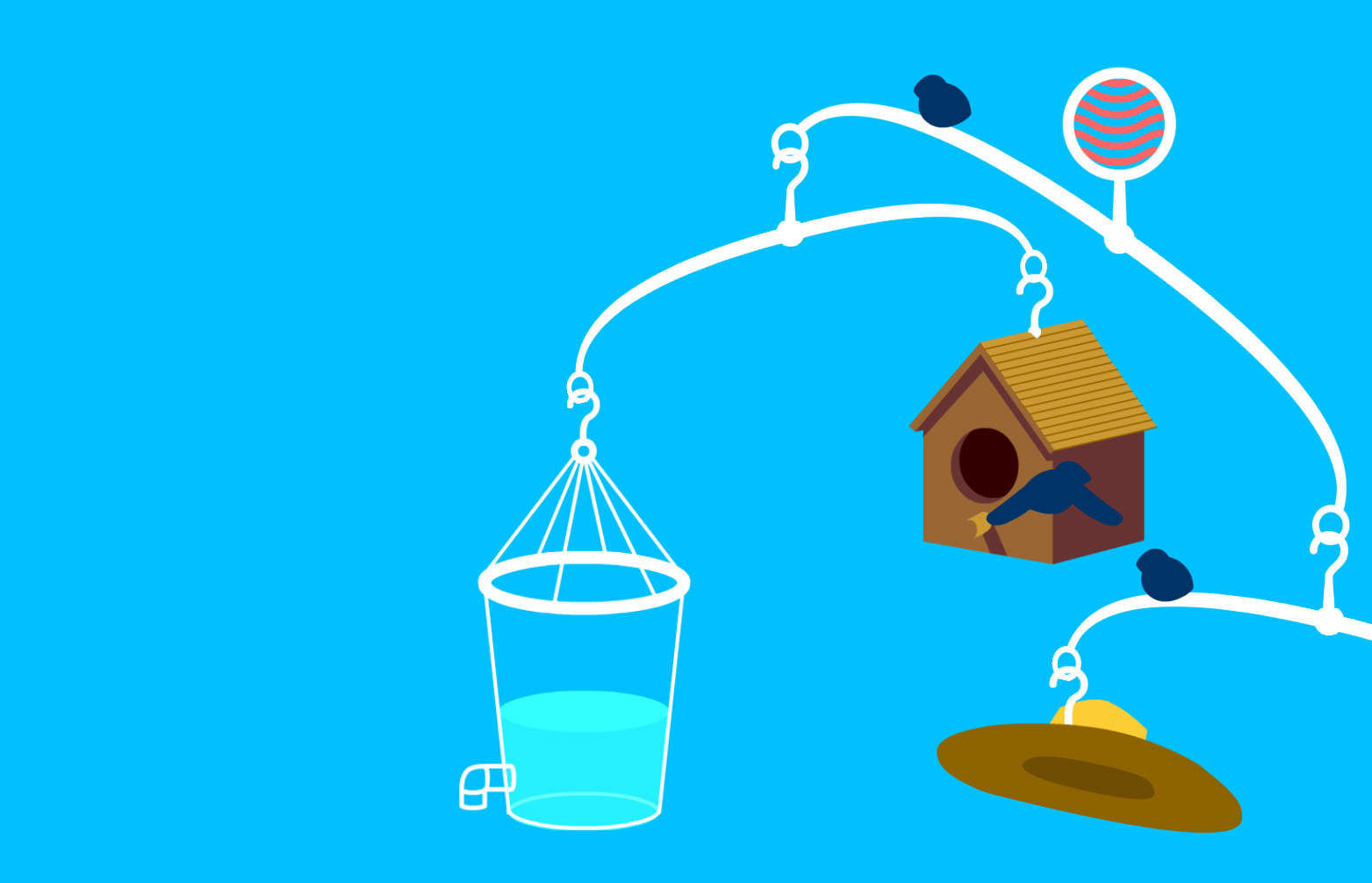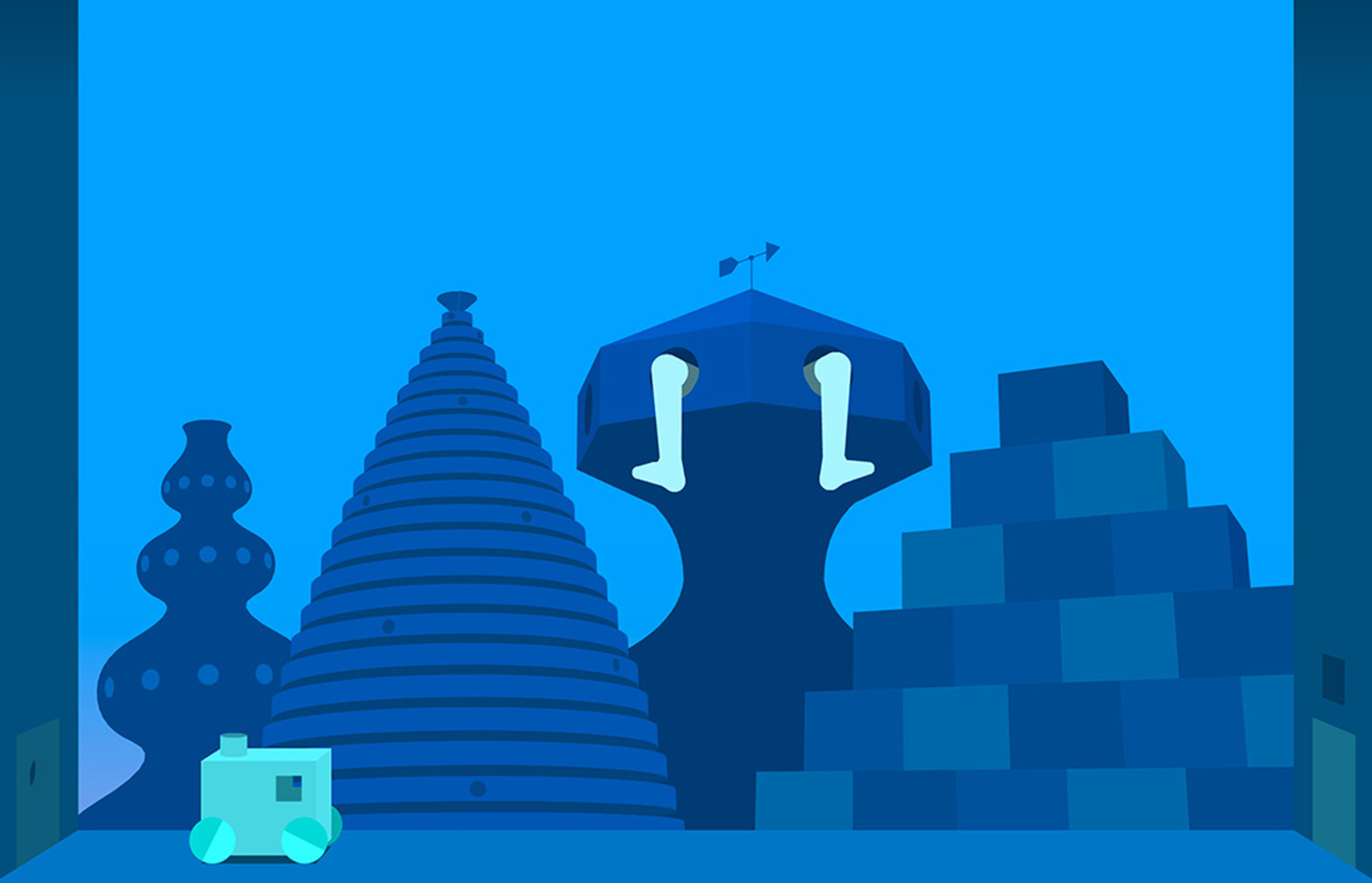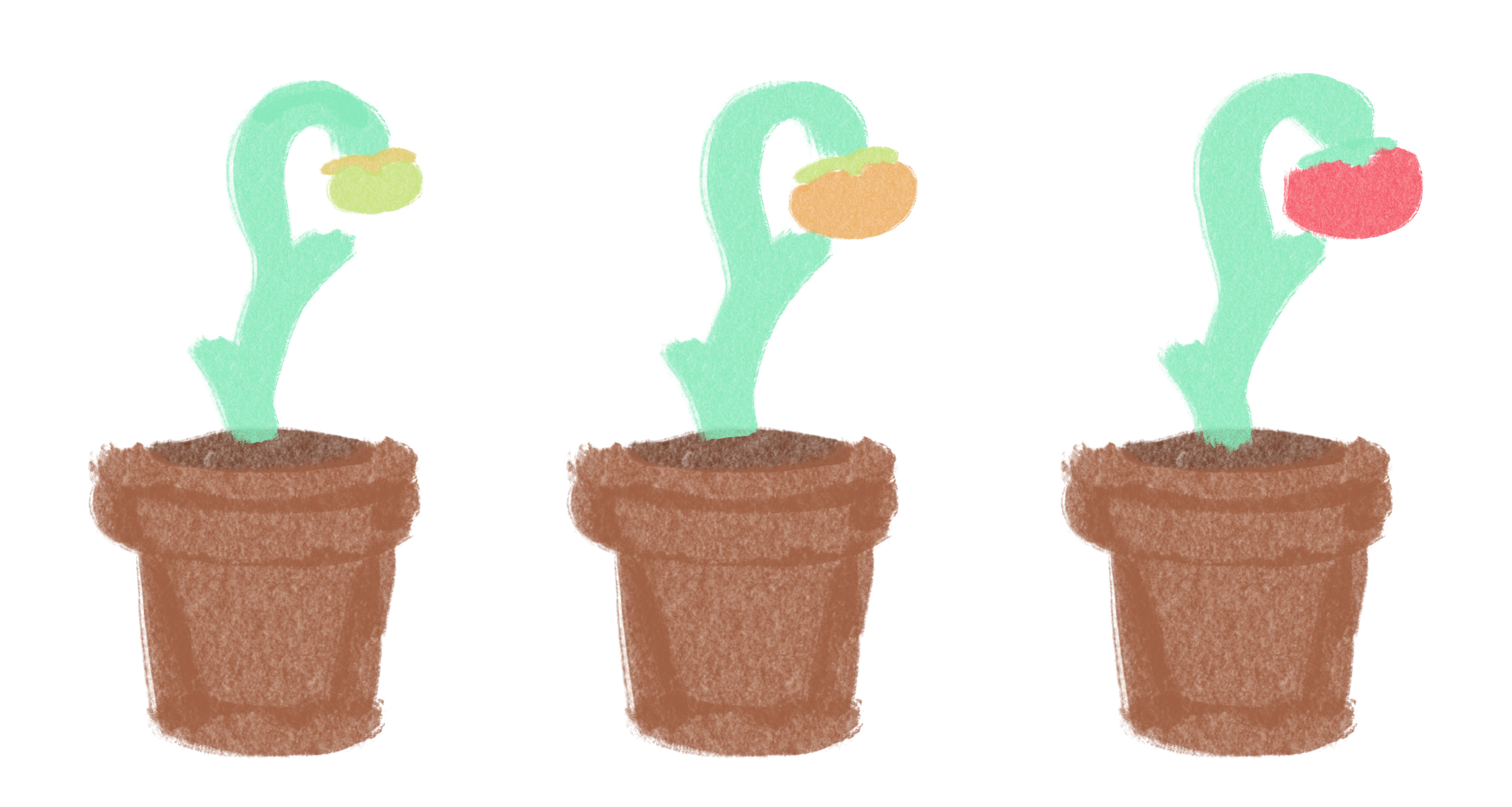To my first question, Patrick described how he enjoyed the silence of comics, specifically silent narrative comics. I immediately thought of Gary Larson's The Far Side comics, which use only illustrations (and rarely background text) to describe the scene. Patrick described that he enjoyed how silent narratives allow viewers to wander and explore the “space” (in this case, explore the space of the page). Stories can be stitched together by visual descriptors that give components context between one another. He sees this as an organic process, where you don't sit down to write a story—the illustration writes it for you.
